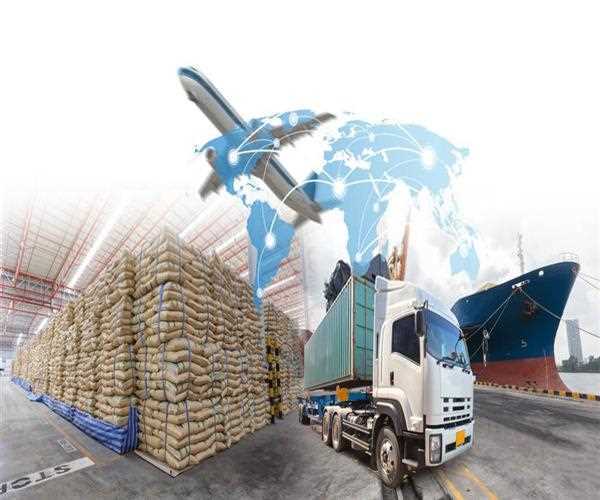Mostly, business today revolves around uncertainty, volatility, ambiguity, and complexity. It’s also composing an enhanced modernized transportation industry, indicating a rise in its market.
It allows scalability, flexibility, and a standardized process for running all the transportation activities across the supply chains. The system also enables real-time tracking and delivery of goods based on the routing progress, order information, and more.
In simple terms, the transportation management system, TMS, is a forum allowing optimization and management of their daily goods logistics. This article discusses the major benefits associated with a transport management system. Let's continue reading to understand more.
What are the benefits of a transport management system?
Inventory management
The TMS solution helps multiple companies control real-time orders and goods shipments and acquire all updates developing on them. That provides a correct inventory forecast leading to an enhanced supply chain network accountability. Additionally, it helps build confidence that your customers receive their deliveries as expected. As the future promises an increased e-commerce freight shipping, this management level in your inventory mainly has the potential to better other supply chain systems.
Planning
Many TMS features pay attention to the execution. However, its power system mostly helps plan and optimize the shipment. This is through offering data and analytics on various aspects, for example, service level, transit time, and price, to select a route and carrier that favors the customer's pocket and is the fastest. Such optimization can apply to the load level and order. For instance, customers can redirect orders and size loads to capitalize on carrier resources utilization. Another option is through multileg trips, which help reduce fuel and labor expenses by ensuring no empty miles among trips.
Nowadays, the transport management system solutions can perfectly merge your other logistics management networks, including supplier relationship management, customer relationship management, warehouse management systems, and purchasing and order management systems. All of which is through a cost-effective carrier that favors your company or organization. Mostly, a TMS composes reporting features and analytics that analyze carrier movement. The data and report will then be analyzed by a Business Intelligence forum or the ERP system.
Freight management
A transport management system serves by acquiring, storing, and updating shipping rates charged by carriers. It's usually done in real-time using the internet. Comparisons are simpler when these rates appear in one area, unlike the older TMS days when managers had to manually fax or phone record rates and carriers. Thanks to the digital world because a lot is managed online; rates negotiation, carrier relationships, and delivery times. More freight management features dealing with workflow and paperwork, include load tendering and individual carrier contracts. They aid in providing the needed details by carriers to opt for either bidding on the load or not, which later serves as the agreed record. Other transport management systems also carry out order management, but the role is mainly served by a separate order management system or ERP.
Warehouse efficiency and yard management
Did you know that transport and management systems also support yard and warehouse running? It depends on the amount of time dedicated and how often you engage in TMS. For instance, having an increased number of TMS platform use gives a chance for reduced inefficiencies in your shipping management. You'd also have more optimization time in your warehouse and yard. Integrating the transportation management system and your Warehouse Management Systems and Enterprise Resource Planning benefits in minimizing the entry errors number and provides the general supply chain combination for informed decisions.
Administration
There's a lot of complexity in the logistics and transportation sectors that need substantial paperwork for smooth business transactions, auditing, and regulatory compliance. It's essential for any transport and management body to own enough administrative properties featuring supported documentation and financial reports. Such features include tools, payment, and billing for accuracy when comparing a shipment's published rates and the invoice amount. Using an automatic payment system may also reduce instances of dealing with invoices. In transport management systems, a lading bill can work. Here, there’s a receipt type issued by a specific carrier indicating the shipment items and the contract terms. The same technique can as well apply in insurance and customs.
A transport and management system must deal with settlement. It’s a complex process where freight milestones and metrics need documentation before any payment, for example, pickup and transit time, plus delivery proof. In this settlement process, the data collected is basic for the optimization process and performance management in a transport and management system. Users and customers can get clues to capital utilization and demand by searching on settlement data. They can also negotiate for reduced pricing considering aspects, such as time of the day and loading speed.
Optimized routing capabilities and driver tracking
Optimized routing is more challenging than before since shipment sizes have decreased and order cycles shortened. But, the right TMS equipment can help companies develop pool distribution. This delivery method is cheaper and faster, hence bigger visibility and control levels. Involved operators can easily pick pool point for the pickup of specific deliveries. Other orders can be routed in separate carriers to save time and reduce costs. On the other hand, driver tracking in real-time enables managers to pinpoint the best routes and develop more functional schedules for future work. It's also easier for individual driver assessment. A driver's efficiency and performance are tracked to give feedback and allow room for change if necessary. Tracking can be beneficial in safety matters, especially in preventing accidents.
The bottom line
Having the best transportation management system solution saves costs to its users. As a result, a company's efficiency and productivity go up. Through the benefits discussed in the article above, a business has a higher potential of reaching greater heights. There are numerous logistics companies at your service. They serve from quoting until delivery of your goods, with everything done online. Mostly, they have a comprehensive logistics intelligence system for businesses to scale their transport activities and save time. You also benefit from real-time visibility and full-scale automation throughout the shipping process without manual intervention.




Leave Comment